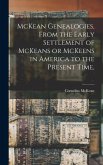Examining how the world of antiquity conceived of particular moments when the time-bound universe could access the world beyond time, this book seeks to discover to what extent pagan philosophical conceptions of the time-eternity nexus later filtered through to medieval Christian belief. In both public and private, and elite and plebeian, contexts solar equinoxes and solstices were regarded as providing liminal 'passageways' between the time-bound world and the timeless sphere of the 'hereafter'. This hypothesis stems from an explanation by the 3rd century CE Neoplatonist, Porphyry, of the vision of the cosmos propounded by the Roman mystery religion of Mithras. According to Porphyry, in this cult the midsummer solstice was regarded as the point of entry for souls from heaven into this world (called genesis), while at the midwinter solstice there lay the point of re-entry to heaven (termed apogenesis). Through an analysis of popular pagan belief, Platonic cosmological theory and Christian philosophy this book argues that this conception pervaded ancient society well beyond the boundaries of the Mithras cult and, over time, extended into the medieval world.
Hinweis: Dieser Artikel kann nur an eine deutsche Lieferadresse ausgeliefert werden.
Hinweis: Dieser Artikel kann nur an eine deutsche Lieferadresse ausgeliefert werden.








